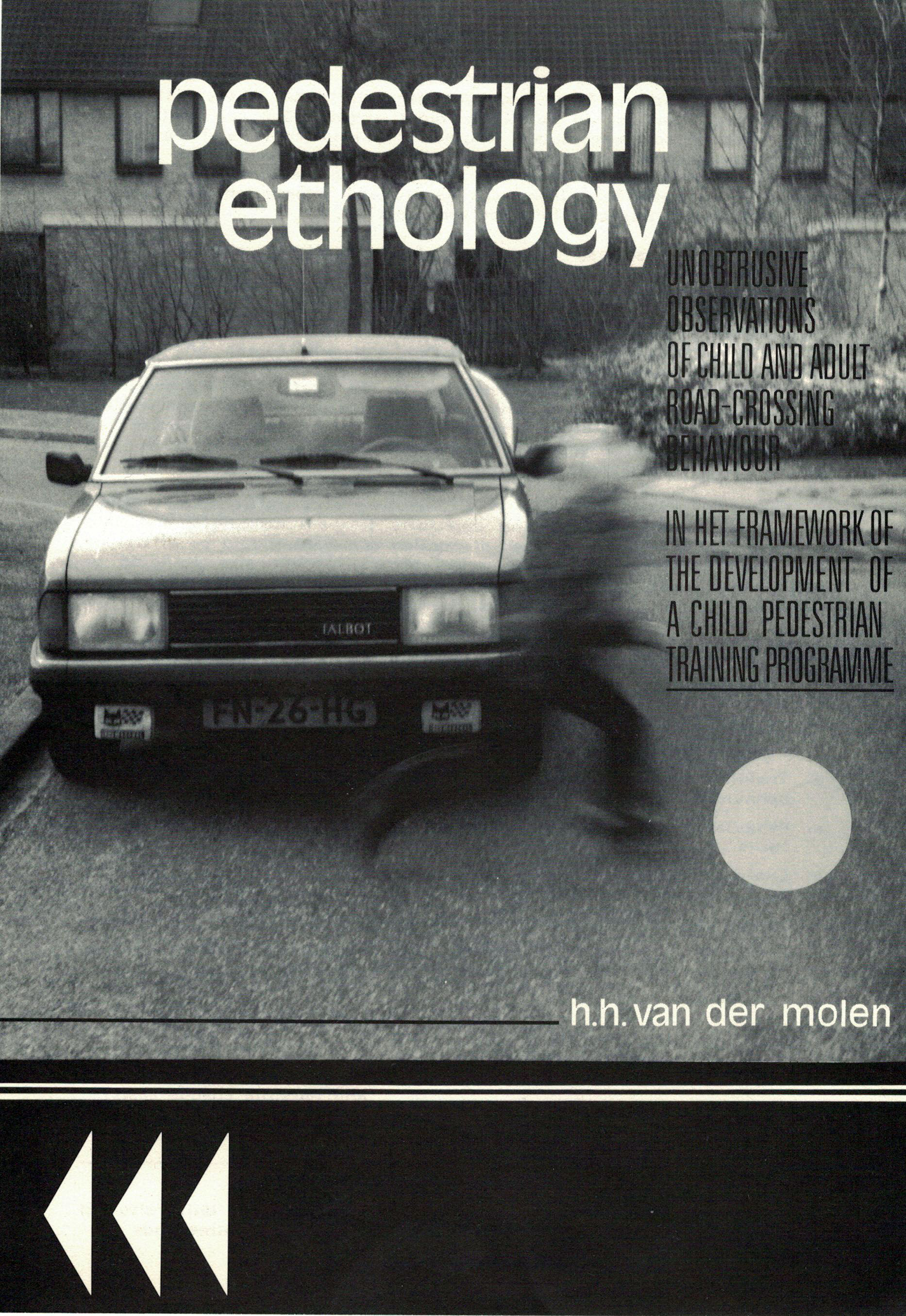
Dr. Hugo H. van der Molen - Wederikweg
114 - 9753 AE Haren, The Netherlands
Tel: +31 (0)50 534 8795; email:
[email protected]
Follow@plattezaken en Facebook of Linkedin
Pedestrian Ethology:
Unobtrusive observations of child and adult behaviour in the framework of the development of a child pedestrian training programme.
Haren, The Netherlands, 1983: 221 pages, ISBN 90 9000426 2
by H.H. van der Molen
price: € 20 + shipment costs
Traffic accidents form a most serious threat to the lives and health of preschool children. These accidents generally occur in the vicinity of their homes, that is, in relative quiet streets. One can distinguish three types of countermeasures: engineering, enforcement and education. All countermeasures can only be optimized when one takes into account the way children typically behave when crossing the streets in the area they live in. Until now there was hardly any information of this kind available and it was certainly not very specific.
This book describes a number of observational studies of the spontaneous behaviour of preschool children when crossing quiet streets on their way to or from kindergarten or when at play. The behaviour of the children is compared to that of adults in order to identify behavioural differences which may explain differences in accident invovement. Behaviour of both children and adults was analyzed in great detail and interpreted in terms of different strategies for information processing and adaptation to the traffic environment. By comparing behaviour hefore and after application of an experimental child pedestrian training programme (in which parents acted as mediators) positive effects on spontaneous behaviour of children and adults could be assessed.
This book should be useful to all involved with traffic safety, either in practise or in research, and especially to those working in the field of child traffic education. The information conveyed should be of use as well to those working in the areas of engineering and planning of residential areas, legislation and traffic education for drivers and parents.
TABLE OF CONTENTS
1. Introduction
2. Identification of child pedestrian training objectives: the role of task analysis and empirical research.
3. Training observers to follow children and score their road-crossing behaviour.
4. Behaviour of preschool children when performing three pedestrian tasks.
5. Evaluation of a pedestrian training programme for preschool children by unobtrusive observations.
6. Comparisons of pedestrian behaviour of preschool children and adults.
7. Pedestrian behaviour of children and accompanying parents during school journeys: an evaluation of a training programme.
8. Conclusions
Back to home page company letters and invoices *** Go to scripophily home page *** Back to general home page